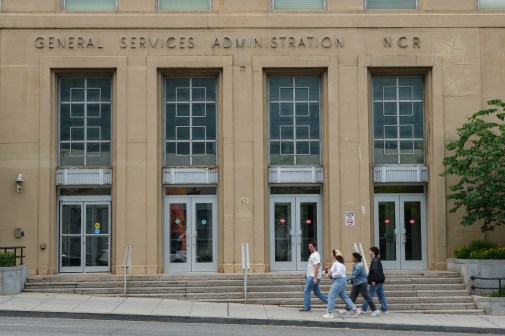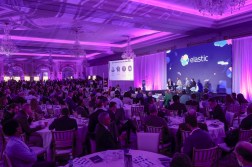Reimagining tech modernization for the future in government

The promise of artificial intelligence and machine learning — applied and deployed responsibly — is immense for the public sector. From automating mundane tasks and increasing productivity to quickly and efficiently processing large amounts of data that was once locked in data silos, the possibilities are becoming realities.
Take for instance the U.S. government’s General Services Administration (GSA), which went from 17 different email and messaging services to one, creating a faster and more efficient platform; or how the National Institute of Health (NIH) changed its approach to cancer research by securely and safely sharing a wide collection of up-to-the-minute datasets and providing powerful new analysis tools.
We saw these advances in government enabled by one particular technology: cloud. As promising as these results are, what matters most for the long term is approaching cloud services through the lens of solving issues of the present, while simultaneously setting up for the future.
Ending an old habit
Having spent three decades providing technology to the government, I’m no stranger to building solutions by applying a technological know-how with a deep understanding of public sector agencies and their missions. Too often in government, we see the sustainment of past technologies, which keeps systems afloat, but does nothing to address present and future needs. Legacy solutions, simply put, just don’t have the scale or speed capable of handling the workloads and requirements of today’s world.
Like much of the private sector, our government services are becoming more data-driven, demanding an IT environment that will support the digital-first approach. Government is first and foremost a people business, delivering citizen-centric services, education, public safety, national security, and more, all of which require secure and reliable systems where AI and ML capabilities can promote quick, agile, and efficient services to constituents. And all AI and ML capabilities boil down to one thing: data. That data must exist in a secure environment, and the best way to secure an environment is to modernize.
We’ve seen too many security breaches from exploits of buggy software and obsolete security systems, and at a local level, ransomware attacks are rife.
Modernizing the infrastructure through thoughtful cloud implementation can solve these issues. In the cloud, system management and upgrades are easier; performance data more readily available. Personnel training is more flexible and accessible. Application modernization is more automated. Data management and analysis are more nimble, with faster output and lower time to insight.
Bringing the cloud forward
Infrastructure modernization goes beyond simply moving data and applications from on-prem to the cloud. Modernizing means reimagining the approach to the entire IT environment and rebuilding with a new mindset that assumes cloud as the default. Cloud-native is that approach.
Unlike monolithic applications, which must be built, tested, and deployed as a single unit, cloud architectures decompose components into loosely coupled services to improve the speed, agility, and scale of software delivery, making applications easier to deploy, edit and integrate with other applications. Because of its inherent pliability, this approach lends itself better to building and deploying emerging technologies, like edge computing, AI, ML, and more.
For example, to train AI/ML models, agencies need high volumes of diverse, credible data with a lot of computational power and that can only be done in the cloud. According to the U.S. Chamber of Commerce Technology Engagement Center, the U.S. spends $143 billion on information collection just at the federal level. This is a wealth of information that — in a modern infrastructure that can protect and process said data — could create opportunities for citizen engagement and service delivery that we’ve only dreamt of until now. But for that, government agencies will need to begin thinking differently about their cloud strategy.
In order to be a cloud-native organization in the public sector, you cannot continue to just do things the way you have always done them. This is why, over a decade after establishing FedRAMP, the Office of Management and Budget (OMB) outlined modernized guidance on cloud deployment, steering government agencies away from dedicated GovClouds. The OMB has recognized that dedicated GovClouds are not cutting it for government agencies to modernize their infrastructure and that agencies need a better approach to cloud computing that delivers commercial-grade scale and flexibility, all the while remaining secure and compliant.
In 2024, we are going to see a major shift in the technology landscape in government towards modernization. In order to do so, government and public agencies must evolve culturally and procedurally with flexibility and the courage to modernize by reimagining for the future.






